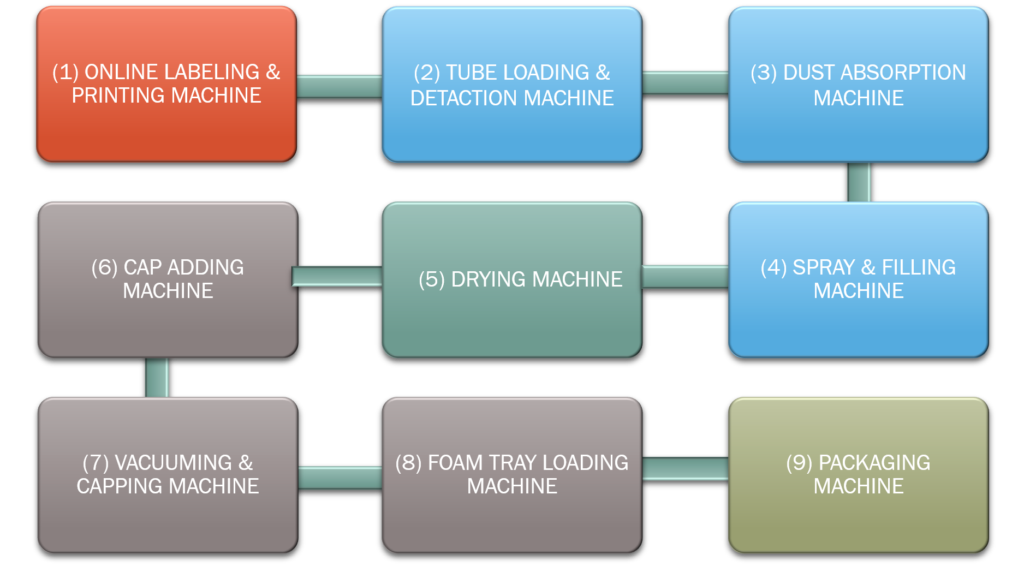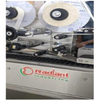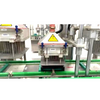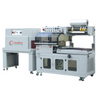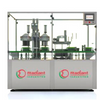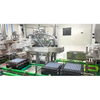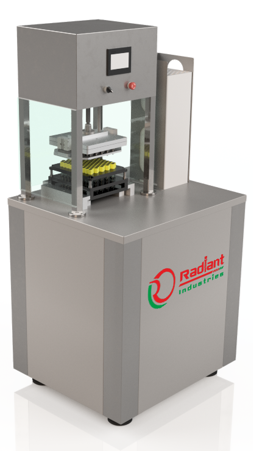Automatic Vacuum Blood Collection Tube ASSEMBLY LINE Project
RADIANT INDUSTRIES FULLY AUTOMATIC
BLOOD COLLECTION TUBE ASSEMBLY LINE

Automatic Vacuum Blood Collection Tube Assembly Line
Our new complete solution AUTO RI-BCT- can be used to manufacture and package both vacuum and non-vacuum blood collection tubes,” says Sales Director Chintak Patel. The machine can therefore dispense all common additives, such as gel, EDTA.K2, EDTA.K3, lithium herapin, trisodium citrate, and many more. The system stands out with its modular design and can be extended with further stations if necessary. It covers every required process step all the way to packaging, in polystyrene trays, for example.

Working Process Of Fully Automatic Vacuum Blood Collection Tube Assembly Line
- Tube Labeling & Online Printing Machine
- Tube Loading & Detection Machine
- Chemical Dosing Machine
- Tubes Drying System
- Capping, Vacuuming & Tray Loading Machine
- PLC Scada For Automations

The company’s portfolio also includes assembly machines for medical products such as pre filled syringe and BCT. range of machine solutions for pre filled syringe and BCT includes both semi-automatic machines with manual loading and fully automatic machines. The company’s portfolio is topped off by its own feed systems. In partnership with Radiant Industries , Automation is able to provide complete systems that incorporate both companies’ technology and expertise.
Brief Overview:
Vacutainer
A vacutainer blood collection tube is a sterile glass or plastic test tube with a colored rubber stopper creating a vacuum seal inside of the tube, facilitating the drawing of a predetermined volume of liquid. Vacutainer tubes may contain additives designed to stabilize and preserve the specimen prior to analytical testing. Tubes are available with a safety-engineered stopper, with a variety of labeling options and draw volumes. The color of the top indicates the additives in the vial

A range of Vacutainer tubes containing blood
Principles
The Vacutainer needle is double-ended: the inner end is encased in a thin rubber coating that prevents blood from leaking out if the Vacutainer tubes are changed during a multi-draw, and the outer end which is inserted into the vein. When the needle is screwed into the translucent plastic needle holder, the coated end is inside the holder.
When a tube is inserted into the holder, its rubber cap is punctured by this inner needle and the vacuum in the tube pulls blood through the needle and into the tube. The filled tube is then removed and another can be inserted and filled the same way. The amount of air evacuated from the tube predetermines how much blood will fill the tube before blood stops flowing.
Each tube is topped with a color-coded plastic or rubber cap. Tubes often include additives that mix with the blood when collected, and the color of each tube's plastic cap indicates which additives it contains.
Blood collection tubes expire because over time the vacuum is lost and blood will not be drawn into the tube when the needle punctures the cap

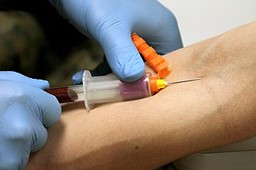
Drawing blood from the median cubital vein using a vacutainer. The clear plastic sheath around the top of the tube holds the needle. The orange guard will shield the needle after it is withdrawn from the patient to protect from accidental needle sticks.
Types of tubes
Vacutainer tubes may contain additional substances that preserve blood for processing in a medical laboratory. Using the wrong tube may make the blood sample unusable for the intended purpose. These additives are typically thin film coatings applied using an nozzle.
The additives may include anticoagulants (EDTA, sodium citrate, heparin) or a gel with density between those of blood cells and blood plasma. Additionally, some tubes contain additives that preserve certain components of or substances within the blood, such as glucose. When a tube is centrifuged, the materials within are separated by density, with the blood cells sinking to the bottom and the plasma or serum accumulating at the top. Tubes containing gel can be easily handled and transported after centrifugation without the blood cells and serum mixing.
The meanings of the various colors are standardized across manufacturers
The term order of draw refers to the sequence in which tubes should be filled. The needle which pierces the tubes can carry additives from one tube into the next, so the sequence is standardized so that any cross-contamination of additives will not affect laboratory results

A tiger top tube after centrifugation to separate blood cells from serum
History
Vacutainer technology was developed in 1947 by Joseph Kleiner, and is currently marketed by Becton Dickinson (B-D).The Vacutainer was preceded by other vacuum-based phlebotomy technology such as the Keidel vacuum.
The plastic tube version, known as Vacutainer PLUS, was developed at B-D in the early 1990s by E. Vogler, D. Montgomery and G. Harper amongst others of the Surface Science Group as US patents 5344611, 5326535, 5320812, 5257633 and 5246666
Vacutainers are widely used in phlebotomy in developed countries due to safety and ease of use. Vacutainers have the advantage of being prepared with additives, allowing easy multi-tube draws, and having a lower chance of hemolysis. In developing countries, it is still common to draw blood using a syringe or syringes.

Blood collection tubes are among the basic medical supplies taken by disaster relief programs to affected areas
MAJOR TYPES OF VACUUM BLOOD COLLECTION TUBES


Fully automatic vacuum blood collection tube turnkey project:
Injection molding machine for tubes and caps:
To inject the vacuum blood collection tubes and caps, we use branded injection machine, to work with the NO.1 injection mold, to give the best quality of finished tubes and caps.

Injection mold for tubes and caps:
The molds adopt Husky hot runner, save material and keep good quality of products.


Processes - Injection molding automation
Take-out gripper for cavity molds
Handling roboter: cycle time of around 6 sec. (depending on product and mold design)
Collection in transport systems
- No Additive Tube – This tube is used for collecting blood and storing it for biochemistry, serology and other tests. It provides non-contaminated serum samples for clinical tests, keeping the serum stable for an extended period of time.
- Serum blood collection tube – This tube aims at giving high-quality serum sample for medical technologies. It has 3 kinds of tubes: no additive tube with & without clot activator and brick red cap.
- Hemo Repellent Coated tube – blood collection and storage for biochemistry tests, silicon are used. It is appropriate for a broad range of operation, quick in coagulation. These blood cells don not stick to the side of the tube.
- Gel + BCA – such tubes are used for clinical and biochemical immunology. There’s a barrier gel present inside the tube at the bottom. After the centrifugation, the gel can easily separate the serum from the cells without causing additives exchange between blood cells and serum.
- Whole blood collection tube – this tube provides good quality of blood sample for the laboratories. It has 2 kinds of tube (ETDA) (ETDA.K2/K3 and ESR tube.
- ETDA tube is used for haematology and also as various kinds of blood cell test instruments.
- ESR tube is used for blood collecting and anticoagulation rate test.
- Plasma blood collection tube – plasma blood collection tubes give a high quality plasma sample for medical laboratories.
Pre-Filled Syringes (PFS) is a modern way to apply Parenteral Drugs in an Aseptic manner. PFS has an excellent market acceptance & increased market preference due to following advantages:
- Convenient
- Ease of Use
- Versatile
- Economical
- Clean
- Safe
- Efficient
- High capacity 15000-18000pcs/hour
- High automation, reasonable operation process and optimization of integration, 2-3 skilled operators can manage the whole production line smoothly from tube loading to finished product outputting
- Suitable for vacuum and non-vacuum blood collection tube ,and we can customized for customer share use in one line.
- Intelligent & Humanized Operation System. Humanized design for each station , PLC +HMI control.
- Blood collection tube production line whole line have process quality control. Multi-aspect detection, such as the reversed tubes, missing tubes, dosing, drying temperature, cap in position, foam tray loading etc. Ensures the high qualified rate
- Three Dosing System. Accurate dosing, 3 sets dosing system which can meet different additives/reagents production requirements.
- Advanced Interlaced Tray Loading Technology. Newest technology with the function of interlaced loading and distance adjusting automatically. Applied to both type of the rectangular and interlaced foam tray.
- High Vacuuming Qualified Rate. With unique design of spring-type tube racks. The vacuum degree can be set on touch screen easily and accurately, the corresponding vacuum degree can be automatically set according to the altitude of user’s region.
- High Quality Structure: Main body adopt high quality steel for weight bearing, surface and frame adopt the high quality stainless steel for easier cleaning. Meet GMP standard

